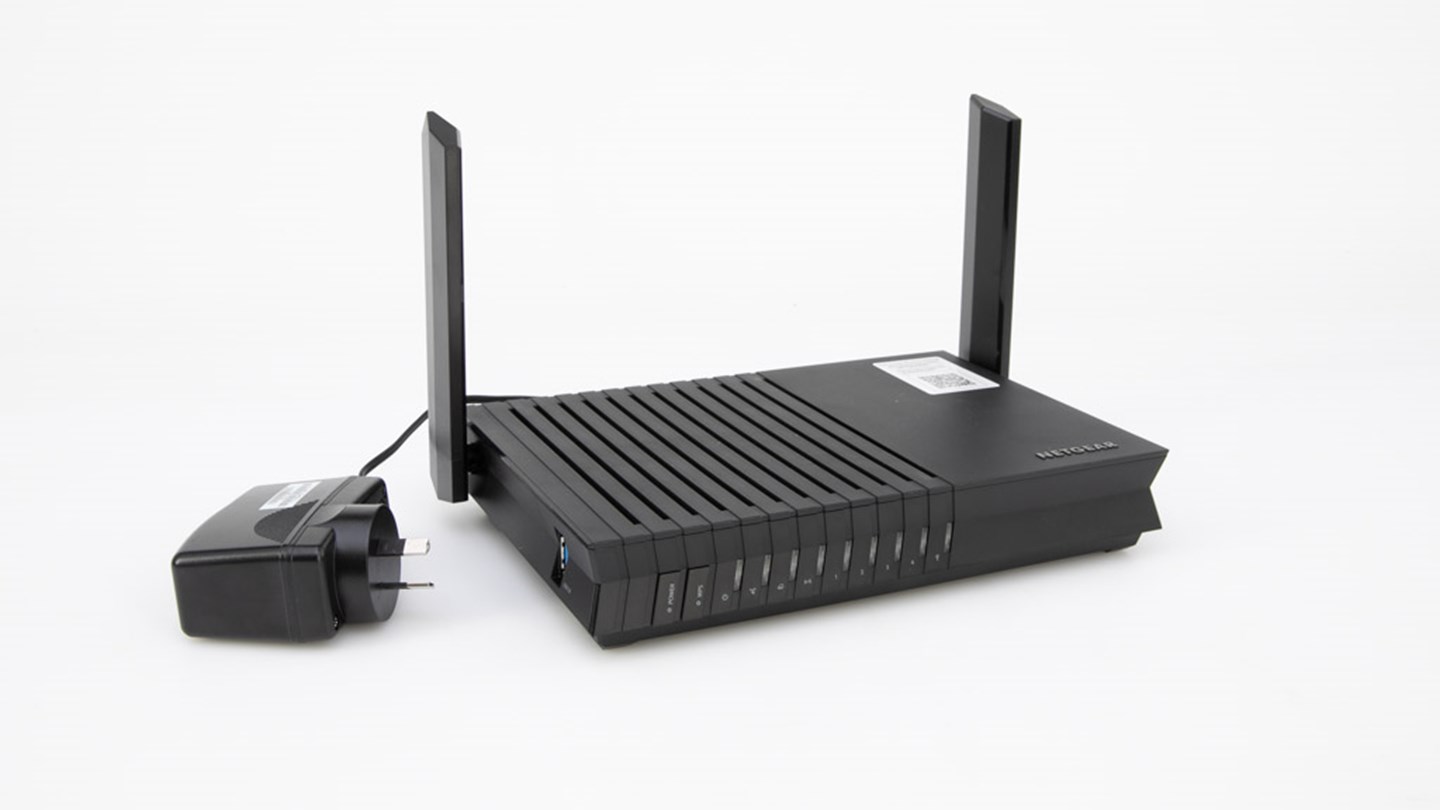D-Link DWR-956 review
802.11ac wi-fi type. Priced at $350.

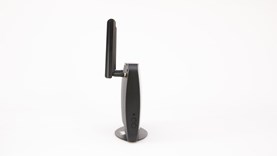
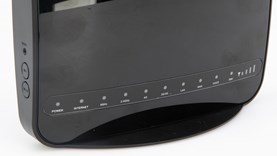
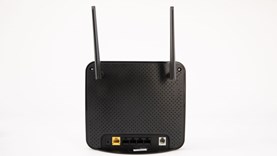
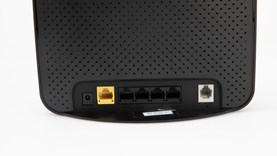
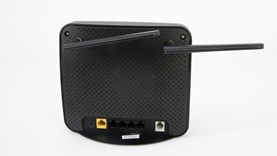
Good points
Bad points

Unlock our expert review and more
- Reviews and ratings you can trust
- Easy side-by-side comparison
- Recommended products at a glance
-
Recommended
View more details.
We recommend models in this test that scored 75% or more overall.
-
CHOICE Expert Rating
View more details.
The CHOICE expert rating comprises Performance score (60%), Ease of use score (35%) and Privacy score (5%).
-
Performance score
View more details.
The performance score comprises a short distance score (40%), a long distance score (30%), and a wall penetration score (30%).
-
Ease of use score
View more details.
The ease of use score is made up of Setup wizard (60%), Wi-Fi encryption (30%), and Parental controls and scheduling (10%). This includes how easy it is to connect the router to the Internet; how easy it is to change wireless names and passwords; and how easy it is to implement extra features such as internet access controls or parental filters.
-
Privacy score
View more details.
Privacy score is a checklist of the following requirements: Wi-Fi secured by default, does not require cloud account to work optimally, asks for a new SSID and password, asks to change admin credentials, can reset to default condition, supports third party VPN, offers guest networks, supports the latest encryption standard, updates firmware during setup, autochecks for firmware updates.
-
Short-range throughput (MBps)
View more details.
Results are in megabytes per second (MBps). Testing 5GHz and 2.4GHz bands in a best-case short range scenario conducted over line-of-sight at a distance of 4m. Fast 5GHz is anything over 70MBps and fast 2.4GHz is anything over 20MBps; sluggish 5GHz is anything under 40MBps and sluggish 2.4GHz is anything under 15MBps.
-
Long-range throughput (MBps)
View more details.
Results are in megabytes per second (MBps). Straightline distance test conducted over line-of-sight at a distance of 40m. Fast 5GHz performance is anything over 50MBps and fast 2.4GHz performance is anything over 15MBps; sluggish 5GHz performance is anything under 40MBps and sluggish 2.4GHz performance is anything under 10MBps.
-
Wall penetration throughput (MBps)
View more details.
Results are in megabytes per second (MBps). Signal penetration test through a double-brick wall and a drywall. Testing is done using 5GHz and 2.4GHz bands and the wall penetration throughput is the sum of these tests. As a guide, fast 5GHz performance is considered to be more than 40MBps and sluggish 5GHz performance is under 30MBps; fast 2.4GHz performance is anything over 20MBps and sluggish is anything under 10MBps.
-
2.4GHz short range speed (MBps)
View more details.
Results are in megabytes per second (MBps). Fast 2.4GHz is anything over 20MBps. Sluggish 2.4GHz is anything under 15MBps.
-
5GHz short range speed (single band, MBps)
View more details.
Measures the fastest single 5GHz band throughput result. Results are in megabytes per second (MBps). Fast 5GHz is anything over 70MBps. Sluggish 5GHz is anything under 40MBps.
-
Dual 5GHz short range speed (MBps)
View more details.
Results are in megabytes per second (MBps). For tri-band routers, which have two 5GHz bands.
-
5GHz long range speed (MBps)
View more details.
Results are in megabytes per second (MBps). Fast 5GHz performance is anything over 50MBps. Sluggish 5GHz performance is anything under 40MBps.
-
Dual 5GHz long range speed (MBps)
View more details.
Results are in megabytes per second (MBps). For tri-band routers, which have two 5GHz bands.
-
2.4GHz long range speed (MBps)
View more details.
Results are in megabytes per second (MBps). Fast 2.4GHz performance is anything over 15MBps; sluggish 2.4GHz performance is anything under 10MBps.
-
5GHz wall penetration speed (MBps)
View more details.
Signal penetration test on the 5GHz band through a double-brick wall and a drywall. Results are in megabytes per second (MBps). Fast 5GHz performance is anything over 40MBps and sluggish 5GHz performance is anything under 30MBps.
-
Dual 5GHz wall penetration speed (MBps)
View more details.
Results are in megabytes per second (MBps). For tri-band routers, which have two 5GHz bands.
-
2.4GHz wall penetration speed (MBps)
View more details.
Signal penetration test on the 2.4GHz band through a double-brick wall and a drywall. Results are in megabytes per second (MBps). Fast 2.4GHz performance is anything over 20MBps and sluggish is anything under 10MBps.
-
Availability
View more details.
This shows which products have been discontinued and which are still available in shops. 'Active' indicates they can still be found in shops and 'inactive' that they are discontinued models.
In some instances, at the request of members and when products are still available on the second-hand market and via sites like eBay, we include discontinued models.
- Tested model
-
Price
View more details.
Price as of February 2022
- $350
-
Yearly power cost ($)
View more details.
Power cost is based on the router being idle for 20 hours (powered on, but not actively transferring data) and streaming Netflix for 4 hours. Consumption will vary depending on the amount of data being transferred over the network per day.
-
Tri-band router
View more details.
A router that includes two separate 5GHz wireless networks in addition to a 2.4GHz network.
- No
-
Maximum claimed speed (Mbps) 2.4+5GHz
View more details.
The maximum speed claimed by the manufacturer, aggregating all bands - 2.4GHz plus 5GHz.
- 300/900
-
Wi-Fi type
View more details.
The type of support included for the 802.11 Wi-Fi standard - 802.11ac (Wi-Fi 5) or the newer 802.11ax (Wi-Fi 6).
- 802.11ac
-
Antennas
View more details.
The number of built-in antennas (Select the "Compare all products" button and see Antenna placement for more information).
- 2
-
Antenna placement
View more details.
Antenna placement - whether internal or external, fixed or removable.
-
Beamforming support
View more details.
Beamforming uses multiple antennas to direct the Wi-Fi signal more precisely to your client devices.
- Yes
-
NBN ready
View more details.
The router has a Gigabit Ethernet WAN port an NBN/cable/fibre modem can be attached to.
- Yes
-
Gigabit ethernet LAN ports
View more details.
The number of gigabit (1000BaseT) ethernet LAN ports included.
- 4
-
USB 2.0 ports
View more details.
The number of USB 2.0 ports included.
- 0
-
USB 3.0 ports
View more details.
The number of USB 3.0 ports included.
- 0
- Size (mm, W x D x H)
- 190 x 100 x 270
- Weight (g)
- 437
-
Warranty (months)
View more details.
Standard warranty in months.
-
Country of origin
View more details.
The model has a claimed origin somewhere on the model itself. This should be taken with a grain of salt, as it's rare that all the materials for a product came from the one country. In most cases this is the country in which the product is assembled and shipped from.
- Website
-
Mimo support
View more details.
Whether the router supports MIMO (multiple input, multiple output), which uses multiple antennas to improve Wi-Fi performance.
- Yes
-
USB drive sharing
View more details.
Whether the router supports the ability to plug in a USB hard drive and share its data across your network.
-
DLNA support
View more details.
Whether the router supports Digital Living Network Alliance (DLNA) guidelines that make connection to other networked devices and streaming media files across your network easier.
- No
-
Default Wi-Fi access
View more details.
Most routers ship with encryption enabled by default, but some don't and you need to encrypt them during setup.
- Secure
-
Installation wizard
View more details.
Whether the router has an installation wizard to guide you through the initial setup.
-
Controls for wireless access or internet scheduling
View more details.
Lets you restrict either Wi-Fi or internet access to certain times of the day.
-
Preset parental filters
View more details.
Inbuilt filters that use a managed list to block known malicious and inappropriate sites.
- No
-
Parental filters URL/keyword
View more details.
Whether the parental filters let you specify to block content by URL and/or specified keywords.
-
WPS button
View more details.
Wi-Fi Protected Set-up (WPS) button is intended to provide a one-button secure connection of the device to your network without needing to manually enter a password or configure it via a web browser or wizard interface. We don't recommend using this method for connecting devices these days due to security concerns.
- Yes
-
Guest network
View more details.
Lets you give visitors access to the internet, but not your local network.
- No
-
QoS (quality of service) support
View more details.
Lets you give particular devices or applications more of your internet bandwidth than others.
- Yes
-
VoIP support
View more details.
VoIP (Voice over Internet Protocol) lets you attach a phone handset and use a voice-over-internet-provider service to make phone calls over the internet.
- Yes
-
Supports 3G/4G via USB dongle (not supplied)
View more details.
Lets you use a 3G/4G mobile broadband network as an internet connection via a mobile carrier's USB dongle (not supplied).
-
Wall mountable
View more details.
Whether the device is designed to be optionally mounted on a wall.
- No









